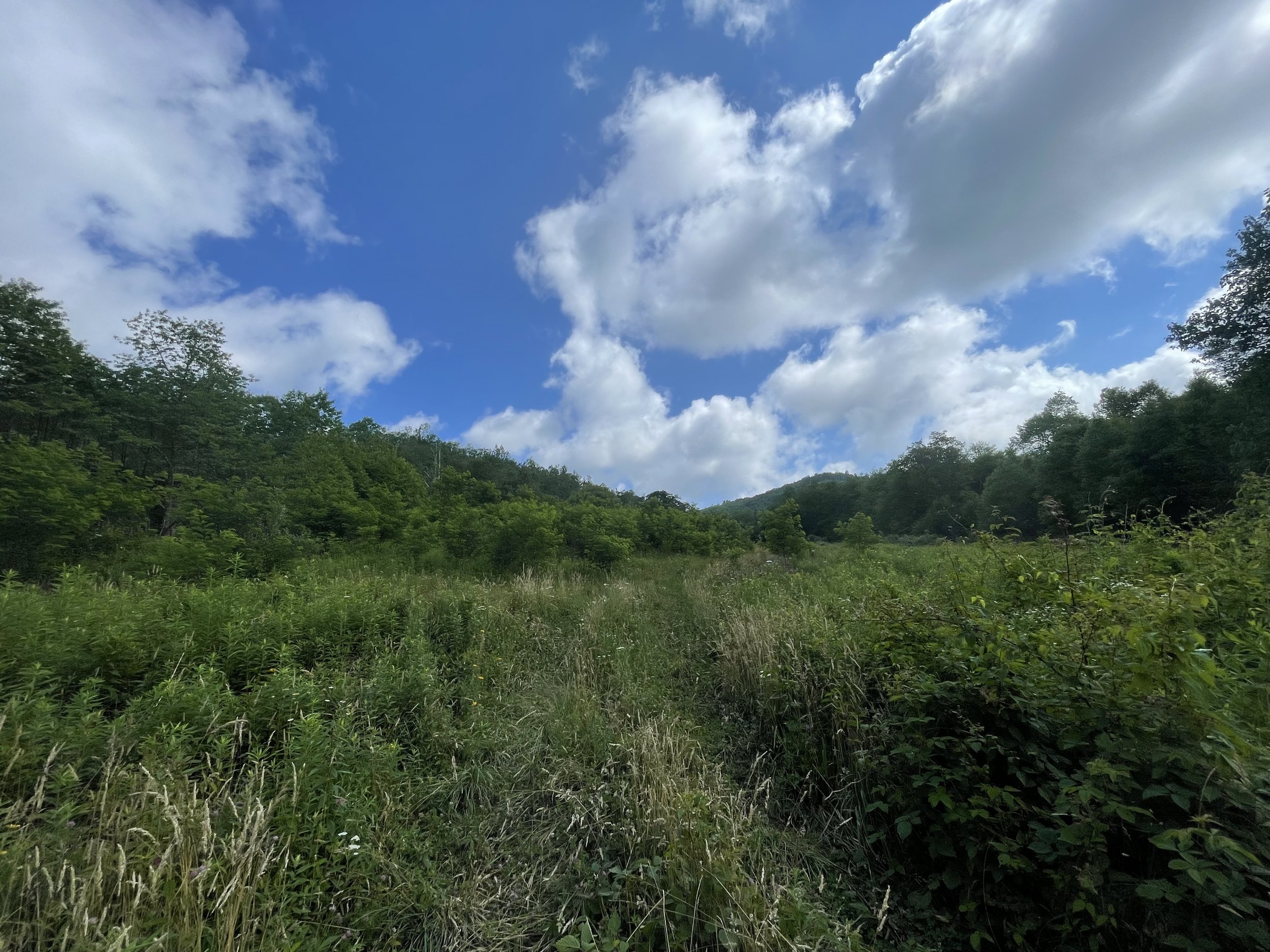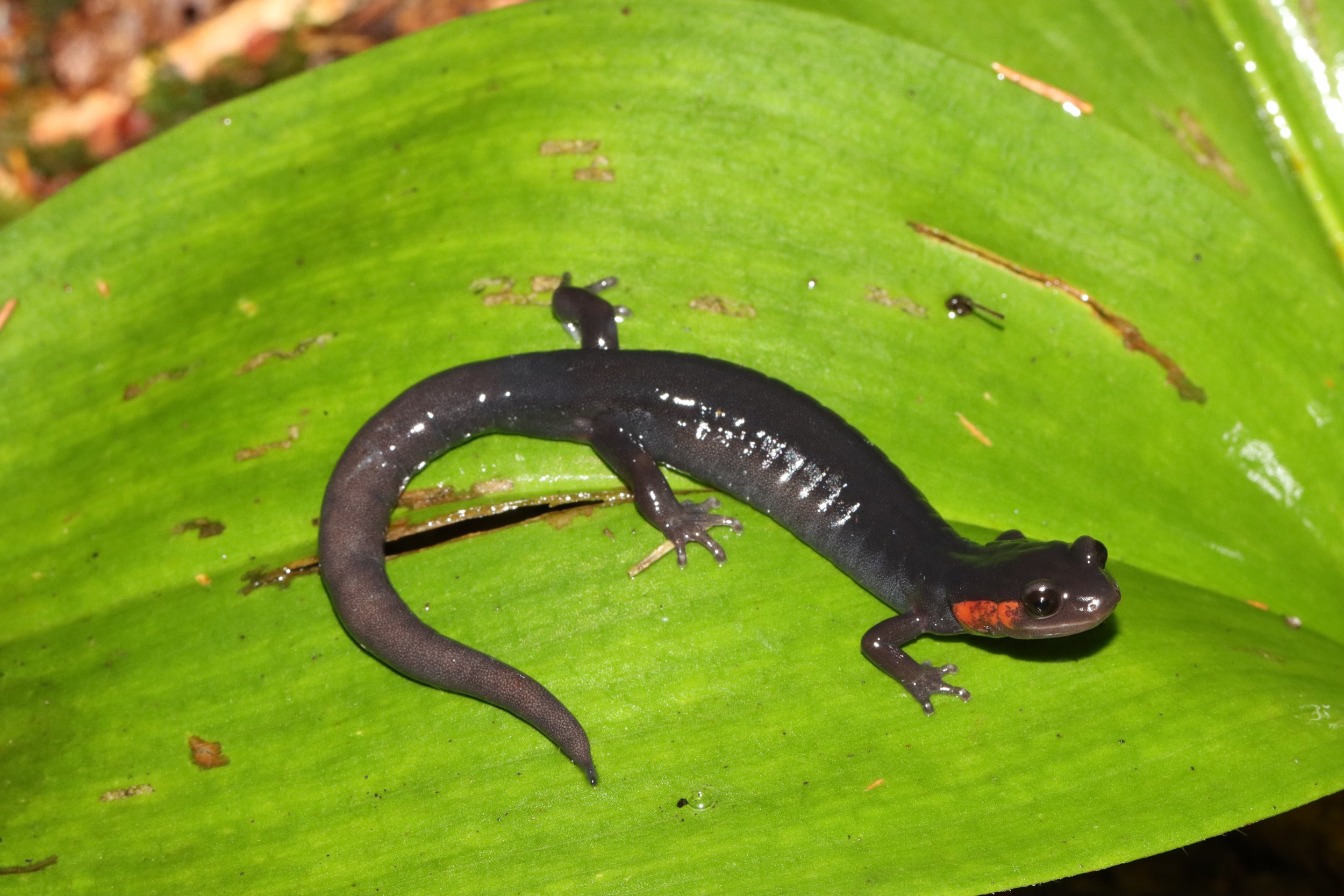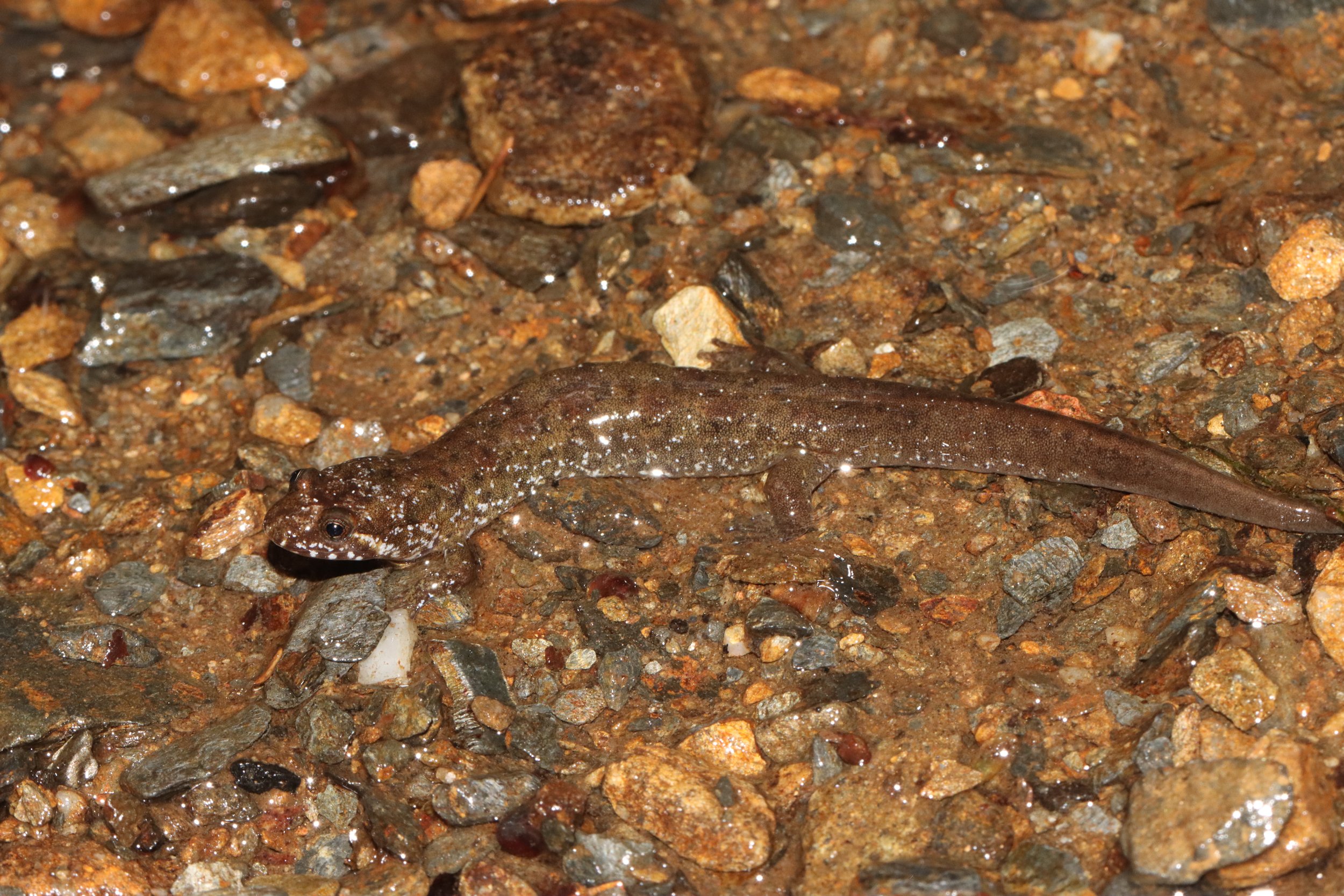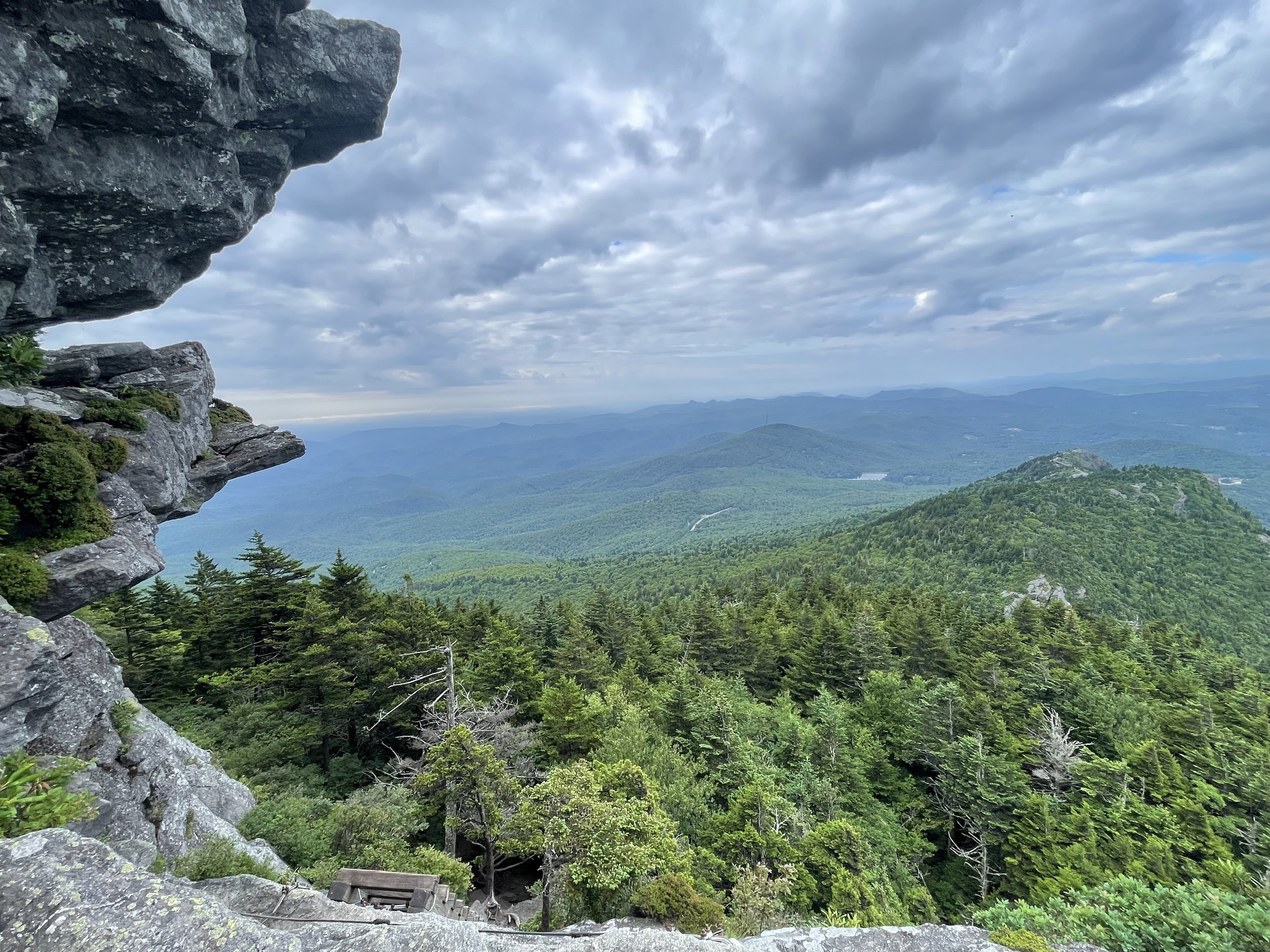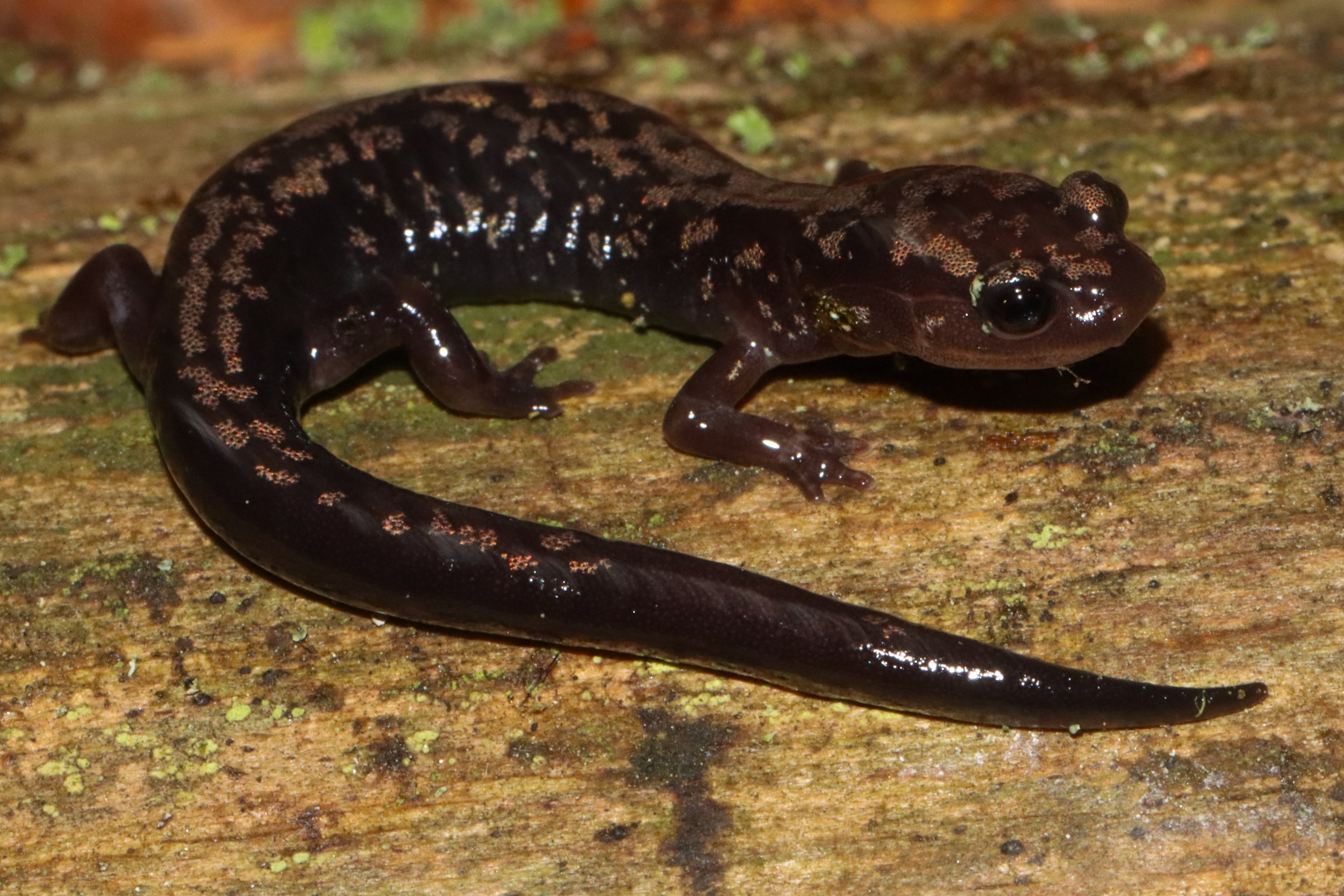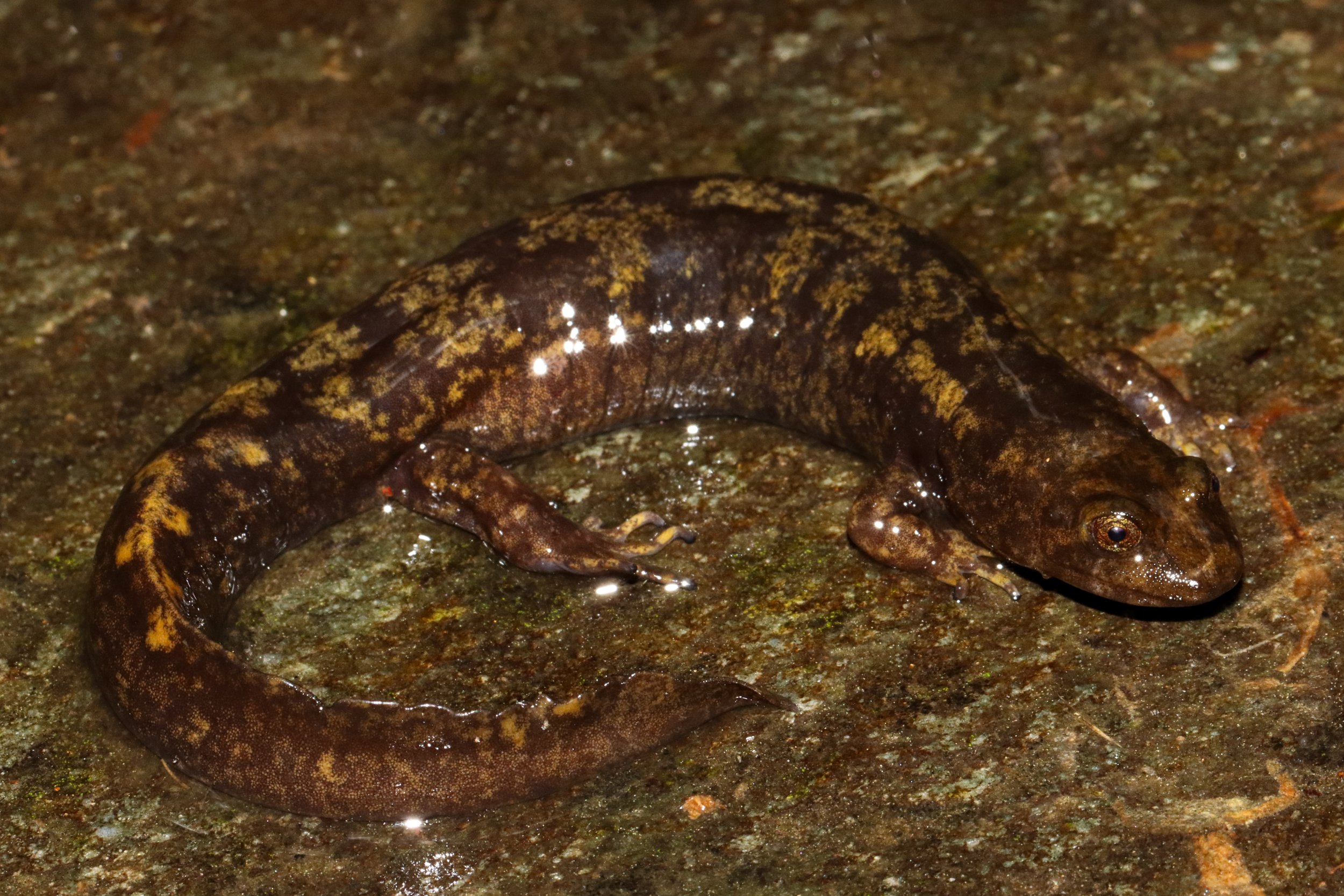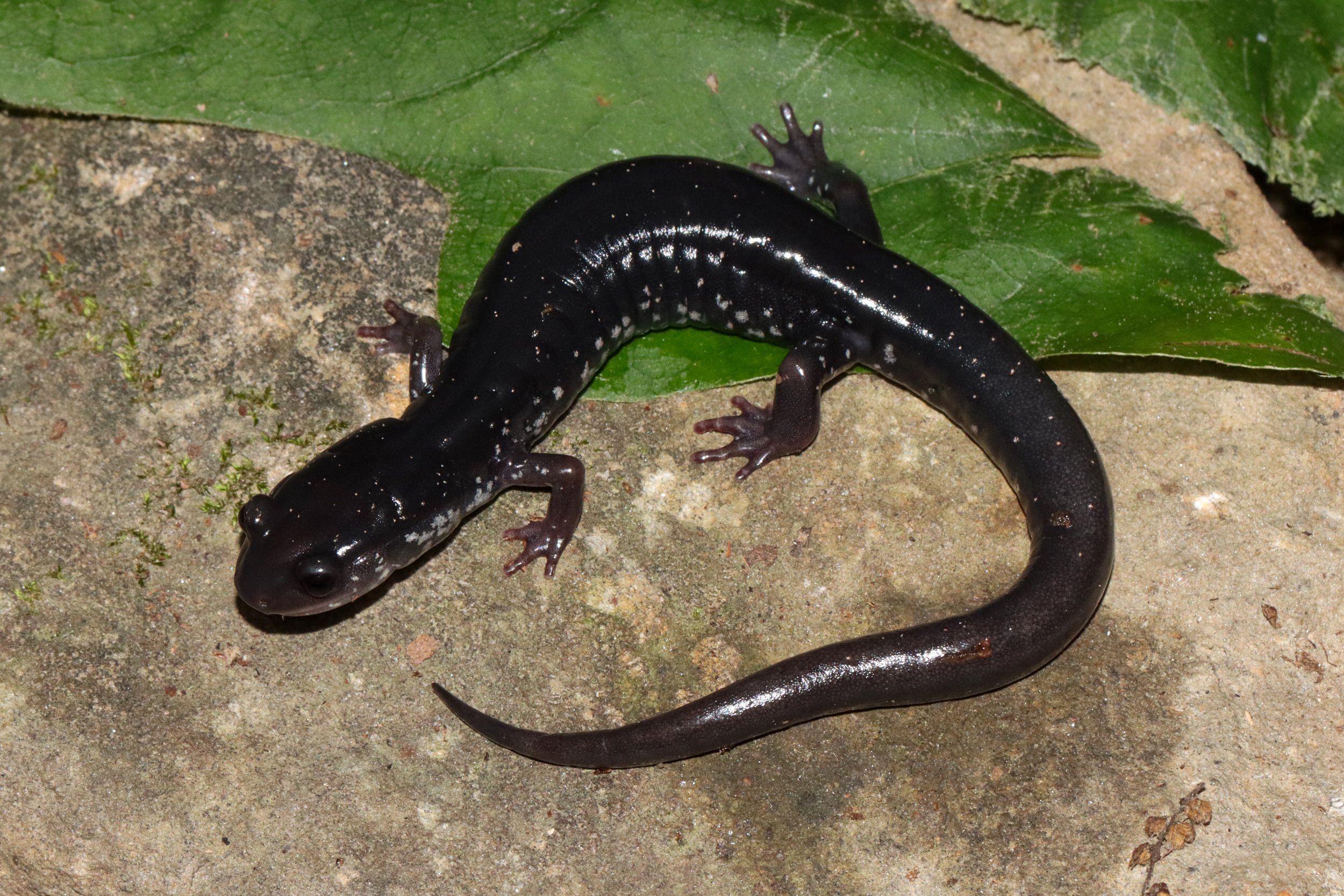Western North Carolina, July 2024
Day 1:
Inimical summer conditions became the regular each day in south Georgia. Seeking solace, I decided to head for the cool high-elevation climate of montane North Carolina. I planned a comprehensive trip of the Appalachian region of North Carolina. My goal during this trip was to observe as much of the diversity of the Plethodon genus as possible and also to knock out a couple representatives of Desmognathus. Although I didn’t initially plan for this to be a solo expedition, last minute planning ultimately turned this to reality. As fun as it is to share this hobby with others, I do relish the meditative and introspective enjoyment of a solo adventure. I enjoy the freedom of being able to operate entirely under my own judgement and to fail or succeed with only myself responsible.
Red legged salamander (Plethodon shermani)
Cheoah bald salamander (Plethodon cheoah)
Nanthala State Forest
I arrived at my first destination just in time for a beautiful sunset over the mountains. Not long after, I turned up my first salamanders. Flipping a few logs in a mixed coniferous-deciduous forest, I turned up my first ocoee salamanders and a few red-legged salamanders. Having turned up my targets sooner than I expected, I decided to head back down the mountain. On my way down, I came across a small creek. Turning a few rocks in the creek yielded numerous blackbelly salamanders. After snapping some photos, I continued on through the mountains to arrive at my next destination at around 10 PM. Here, I was in pursuit of the cheoah bald salamander. I hiked roughly 3 miles almost directly uphill until I eventually arrived at habitat that appeared conducive for Plethodon salamanders. One fruitful log yielded two southern appalachian salamanders and one cheoah bald salamander.
Wood frog (Lithobates sylvaticus)
Southern appalachian salamander (Plethodon teyahalee)
Black belly salamander (Desmognathus amphileucus)
Ocoee salamander (Desmognathus ocoee)
Day 2:
After a very successful first night, I woke up early to try some rock flipping for seepage salamanders. While I was able to see many small duskies I somehow managed to fumble every one of them and couldn’t make a positive ID. I decided to cut my losses and then move on towards a mountain range that harbors a western extent of southern gray cheeked salamanders. I found a rather treacherous gravel road that snaked up about 3000 feet of elevation. At the summit of this range, there were mixed coniferous-deciduous forests and open mesas. A couple flipped logs later I found myself a few southern gray cheeked salamanders and my first blue ridge two lined salamander. I had the pleasure of being able to share the excitement of my find with a family that coincidentally pulled off at my rest stop. I enjoyed the opportunity to share some information about the magical natural history that this region boasts.
Red cheeked salamander (Plethodon jordani)
Carolina mountain dusky salamander (Desmognathus carolinensis)
Hickory Nut Gorge Green salamander (Aneides caryaensis)
Southern gray cheeked salamander (Plethodon metcalfi)
After finding the southern gray cheeked salamander, I continued northward to get into the Great Smoky Mountains National Park. While climbing elevation, I stopped in a few streams to turn up Desmognathus targets. Teasing through some characteristics on a Desmognathus field guide, I was able to identify these two species: the carolina mountain dusky salamander and the spotted dusky salamander.
Imitator salamander (Desmognathus imitator)
Santeetlah salamander (Desmognathus santeetlah)
Carolina mountain dusky salamander (Desmognathus carolinensis)
A light rain began as I made my way up the mountain. A very productive stop at a small stream provided me with several new species. Flipping in the stream provided me with a cherokee blackbelly salamander, an imitator salamander and a santeetlah salamander.
Cherokee black belly salamander (Desmognathus gvnigeusgwotli)
Pygmy dusky salamander (Desmognathus wrighti)
Imitator salamander (Desmognathus imitator)
I was amazed by the shear productivity and density of salamanders on the hillside at this location. Nearly every log I flipped had either an imitator salamander or a red cheeked salamander. While I was setting up my photoshoot for the imitator salamander I must have disturbed nearby leaf litter from which a tiny pygmy dusky salamander emerged. I was very excited to observe the morph of imitator dusky salamander that very closely resembles the red cheeked salamander. This is one of many excellent examples of a batesian mimicry complex in nature. Although I was tempted to stay and enjoy what would be a very productive night of salamandering in the rain, I was determined to continue on a thundering pace towards my next lifers. I drove my next stretch eastward to the Hickory Nut Gorge. After fueling up at a waffle house along the way, I hit the trail at around 10 PM. Propped up by caffeine, I worked hard until turning up all the targets I was after in the area.
Blue ridge gray cheeked salamander (Plethodon amplus)
Day 3
Blue Ridge Mountain Dusky Salamander (Desmognathus orestes)
Reaching elevations in excess of 4000 feet, the climate and habitat began to change drastically. The forest was primarily dominated by spruce and interspersed with mountain laurel. Traversing the mountain trails, I was graced with the redolence of spruce sap and blossoming mountain laurel. I very quickly turned up my first yonahlossee salamanader, gray cheeked salamander and blue ridge mountain dusky. On the other hand, I struggled to turn up a weller’s salamander. I searched some pristine high elevation spruce forest to no avail and decided to give it another shot the next morning.
Six hours of sleep later, I woke up to make my way to South Mountain. I tried my best to turn up a south mountain gray cheeked salamander but ended up coming up short. While flipping logs, I was reminded of the hazards present while flipping cover in the woods… A nice little copperhead. Eventually my timer buzzed and I left South Mountain to head into range for some higher elevation plethodon.
Yonahlossee salamander (Plethodon yonahlossee)
Northern gray cheeked salamander (Plethodon montanus)
Day 4
In the morning I was able to once again return to the high elevation spruce-fir forest. In this habitat I turned up two northern gray cheeked salamanders and my first weller’s salamander. This individual had unique silvery flecking up along its dorsum. Before heading for home, I took one last attempt at northern shovel-nosed salamanders. I was lucky to turn up a striking individual and grab some good photos. After such a successful trip, I knew it wouldn’t be long before I returned.
Weller’s salamander (Plethodon welleri)
Northern shovel-nosed salamander (Desmognathus marmoratus)
Trip 2
Bat cave variant of Yonahlossee salamander (Plethodon yonahlossee var. longricus)
South Mountain gray cheeked salamander (Plethodon meridianus)
Timber rattlesnake
White-spotted slimy salamander (Plethodon cylindraceus)
Hickory Nut Gorge green salamander (Aneides caryaensis)
Blue ridge red salamander
South Mountain gray cheeked salamander (Plethodon meridianus)
After successfully acquiring our south mountain gray cheek we made our way to a nearby stream to turn up the northern shovelnose salamander and the Pisgah black-bellied salamander. I did not capture photographs of these individuals as I had already seen individuals of these species the weekend prior. After that we continued northward towards the North Carolina and Tennessee border. At this location we turned up the northern gray cheeked salamander, yonahlossee salamander and a weller’s salamander. This weller’s salamander was remarkably different in appearance to the one I had observed the weekend prior. Whether this variability reflects a difference in phenotypic appearance of individuals or populations, I am not certain.
Only one work week later, I made my way back to the mountains with Graham and Ben. While we were planning to run a similar route, I was determined to find a few more species to fill in my life list. A late start on the day saw us arriving to the hickory nut gorge around 10 PM. We quickly turned up a few hickory nut gorge green salamanders and a nice adult white-spotted slimy salamander. From there we moved on to a new location to search for the bat cave variant of the yonahlossee salamander. We were initially concerned once we arrived at the site since the conditions seemed severely dry. I returned to a tight cave crack that I scouted out the weekend prior. From the cave emanated a cool and wet climate. I carefully squeezed my way just through the initial mouth of the cave and immediately observed two juvenile yonahlossee salamanders. Not long after that Ben, Graham and I were able to observe several large individuals. This population of yonahlossee salamanders, formerly recognized as the bat cave salamander exhibit a similar pattern to a prototypical yonahlossee although they more frequently have a blotched brown pattern. Time will tell if they are to be elevated to species status again…
After finding our two big targets at around 2 AM we decided that we had more reason to celebrate and keep going than to sleep. We made it to waffle house at around 4 AM to get refueled on some mediocre food and coffee before heading off for one of our most challenging targets. We arrived at south mountain at around 5 AM. I unfortunately navigated us to a dead-end section with unexciting habitat. We flipped a handful of roadside logs and turned up a red salamander of gargantuan proportions sitting under a charred log- seemingly nothing out of the ordinary for this species. As we made our way out of this part of the mountain we drove up on a timber rattlesnake crossing the road at 5:24 AM… Whether this snake was getting an early start on its day or just having a late night, it was a completely astonishing encounter.
We were disheartened to be greeted by the calls of birds which foretold of a pending sunrise. We switched into high gear and fervently shined hillslopes and rock cuts. At roughly 6 AM Graham made the first spot on a south mountain gray cheek. I think our delirium might have suppressed our excitement but it was without a doubt a serious buzzer beater moment. Now that the next day was upon us we figured that the only logical thing to do was to press on forward- we were salamander struck…
Hickory Nut Gorge green salamander (Aneides caryaensis)
To continue our arduous quest, we drove two hours west to get back into the Great Smoky Mountains. I was determined to turn up atleast one more species there that I was unable to find my first time around. While Graham and Ben photographed some red cheeked salamanders, I continued to look hard for the Cherokee Mountains dusky salamander. After scouring a hillside, I finally got lucky and turned up a striking example of this dusky salamander. Fortunately for Graham and Ben, I was also able to turn up their lifer pygmy salamander by shaking up some leaf litter in a dry creek bed. To top it all off, I found my first blue ridge spring salamander. Previously, I had only observed spring salamanders in Pennsylvania, where they exhibit a rather drab appearance. This spring salamander had a nice orangy base with fine black spots and a contrasty white chin.
Cherokee Mountain dusky salamander (Desmognathus adatsihi)
Blue ridge spring salamander (Gyrinophilus porphyriticus danielsi)
Weller’s salamander (Plethodon welleri)
Southern pygmy salamander (Desmognathus wrighti)
After quickly acquiring our targets in the smokies, we continued further south to attempt for Cheoah Bald salamanders that night. Although the severe lack of sleep was taking a toll on us at this point, we reinvigorated ourselves with pizza and energy drinks to begin our steep trek around 10 PM. We climbed the mountain until arriving at a valley dominated by mountain laurel. After flipping a few logs, we were able to turn up a few cheoah bald salamanders and southern Appalachian salamanders. After our final success of the day, we made our way back down the mountain. We threw out some bear minimum camping stuff and sacked out until the next morning… drastically oversleeping our alarms.
The next morning we began our travel back home to Georgia. Along the way we had the goal of turning up a seepage salamander, the We checked out a beautiful roadside rock face with a natural seepage trickling down it. We searched this ideal habitat for seepage salamanders with no luck… After that, I continued up the road to try to find a suitable place to turn my vehicle around. The next closest pull-off coincidentally had some good looking habitat so I beckoned everyone to job out of the vehicle and try for a short while for the southern gray cheeked salamander. Lo and behold, we turned up a totally random seepage salamander on the hillside, seemingly a very unusual habitat choice for this species. In addition we turned up more red-legged salamanders (Plethodon shermani). Our last stop of the trip was at a nice rocky stream in South Carolina. Ben took us to one of his old stomping grounds where we were very easily able to turn up several southern shovel nosed salamanders.
Southern Appalachian salamander (Plethodon teyahalee)
Desmognathus intermedius
Desmognathus aureatus
Cheoah bald salamanders (Plethodon cheoah)
Full salamander list:
Aneides caryaensis
Eurycea wilderae
Desmognathus orestes
Desmognathus carolinensis
Desmognathus monticola
Desmognathus mavrokoilius
Desmognathus gvnigeusgwotli
Desmognathus amphileucus
Desmognathus ocoee
Desmognathus adatsihi
Desmognathus imitator
Desmognathus wrighti
Desmognathus santeetlah
Desmognathus aeneus
Desmognathus marmoratus
Desmognathus intermedius
Desmoganthus aureatus
Gyrinophilus porphyriticus
Plethodon cylindraceus
Plethodon teyahalee
Plethodon serratus
Plehtodon metcalfi
Plethodon montanus
Plethodon meridianus
Plethodon amplus
Plethodon yonahlossee
Plethodon yonahlossee longricus
Plethodon welleri
Plethodon shermani
Plethodon cheoah
Pseudotriton ruber
After concluding my term employment with the Orianne Society, I was headed back up to the northeast. I figured that I would break up my journey with a couple stops for salamanders along the way. Eventually this side venture turned into a hardcore salamander life-listing hunt. My goal was to clean up several Desmognathus species I hadn’t observed on previous trips. Additionally, I searched for several Plethodon species present only in Virginia and West Virginia. I did not grab photos of every species regrettably… Nonetheless the trip was a grand success.
Desmognathus perlapsus
Trip 3
Desmognathus campi
Desmognathus balsameus
Desmognathus folkertsi
Desmognathus anicetus
Desmognathus planiceps
Plethodon kentucki
Desmognathus kanawha
Plethodon hubrichti
Desmognathus welteri
Plethodon dixi
Plethodon punctatus
Plethodon shenandoah
Plethodon wehrlei
Plethodon nettingi
Lifer List (17):
Desmognathus campi
Desmognathus folkertsi
Desmognathus perlapsus
Desmognathus balsameus
Desmognathus anicetus
Desmognathus lycos
Desmognathus organi
Desmognathus planiceps
Desmognathus kanawha
Desmognathus welteri
Plethodon kentucki
Plethodon dixi
Plethodon hubrichti
Plethodon punctatus
Plethodon wehrlei
Plethodon nettingi
Plethodon shenandoah







